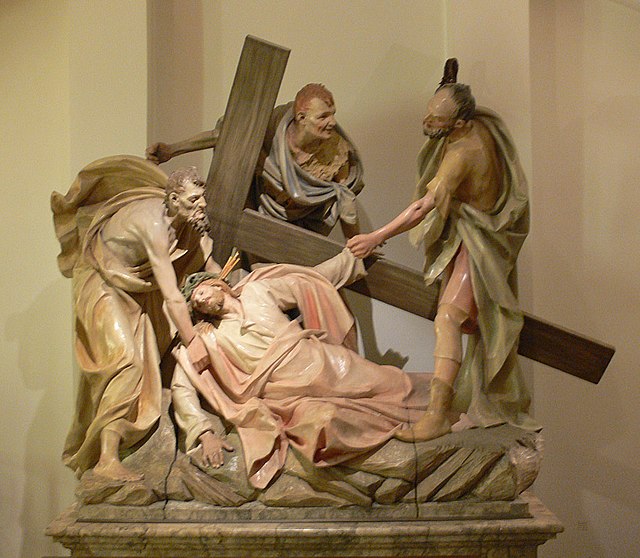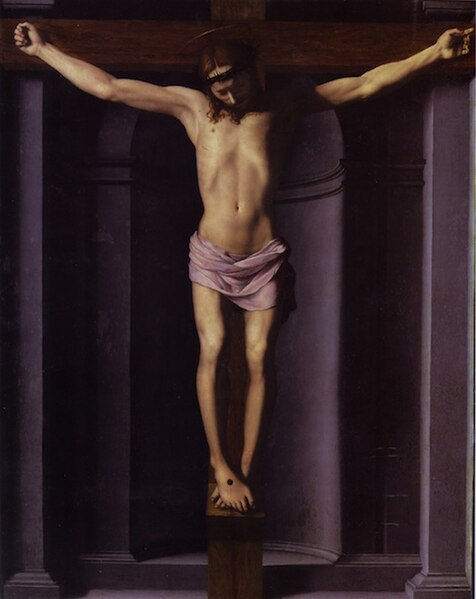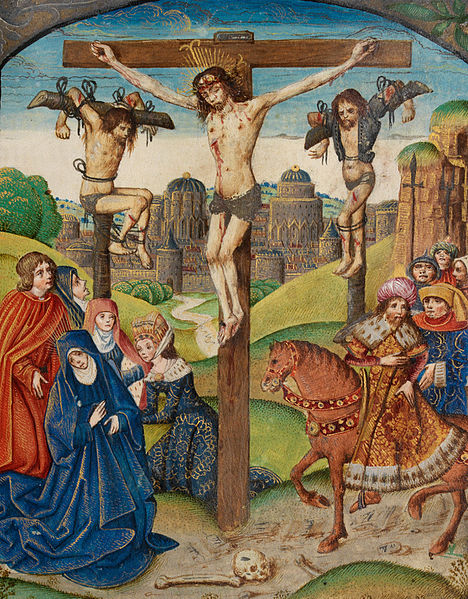Christ Carrying the Cross
Christ Carrying the Cross on his way to his crucifixion is an episode included in the Gospel of John, and a very common subject in art, especially in the fourteen Stations of the Cross, sets of which are now found in almost all Roman Catholic churches, as well as in many Lutheran churches and Anglican churches. However, the subject occurs in many other contexts, including single works and cycles of the Life of Christ or the Passion of Christ. Alternative names include the Procession to Calvary, Road to Calvary and Way to Calvary, Calvary or Golgotha being the site of the crucifixion outside Jerusalem. The actual route taken is defined by tradition as the Via Dolorosa in Jerusalem, although the specific path of this route has varied over the centuries and continues to be the subject of debate.
Andrea di Bartolo, Way to Calvary, c. 1400. The cluster of halos at the left are the Virgin Mary in front, with the Three Marys.
Sebastiano del Piombo, about 1513-14
Jesus falls the second time from a 19th-century German Stations of the Cross
Christ Falling on the Way to Calvary, Raphael, 1516–1517
The crucifixion of Jesus was the execution by crucifixion of Jesus of Nazareth in 1st-century Judaea, most likely in AD 30 or AD 33. It is described in the four canonical gospels, referred to in the New Testament epistles, attested to by other ancient sources, and is broadly accepted as one of the events most likely to have occurred during his life. There is no consensus among historians on the details.
Christ Crucified (c. 1632) by Diego Velázquez
A depiction of the Raising of the Cross, by Sebastiano Mazzoni, 17th century, Ca' Rezzonico
Bronzino's depiction of the crucifixion with three nails, no ropes, and a hypopodium standing support, c. 1545
Christ on the Cross between two thieves. Illumination from the Vaux Passional, 16th century








